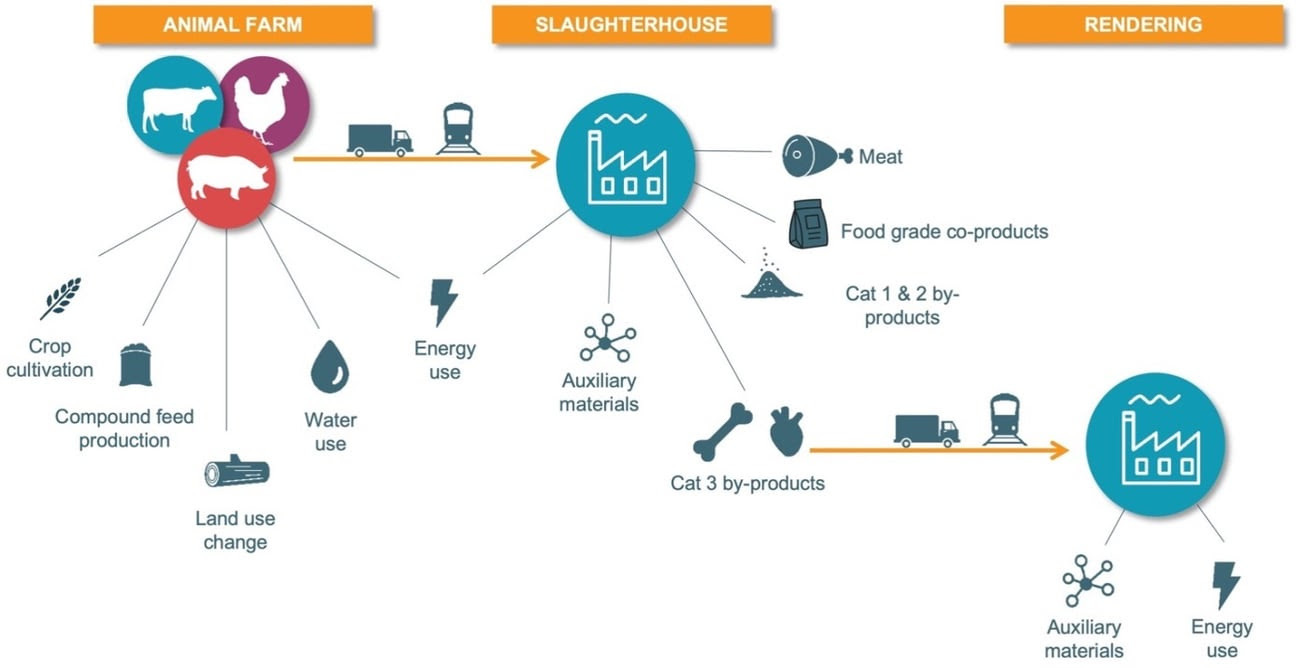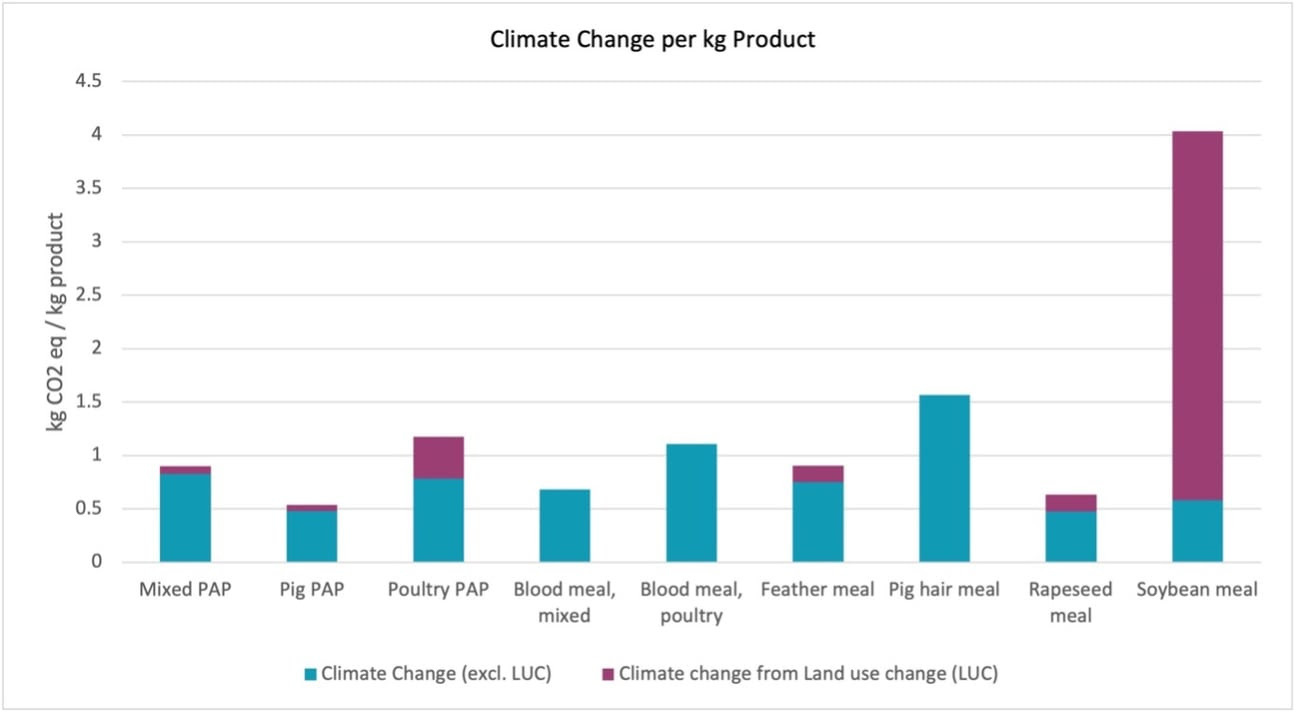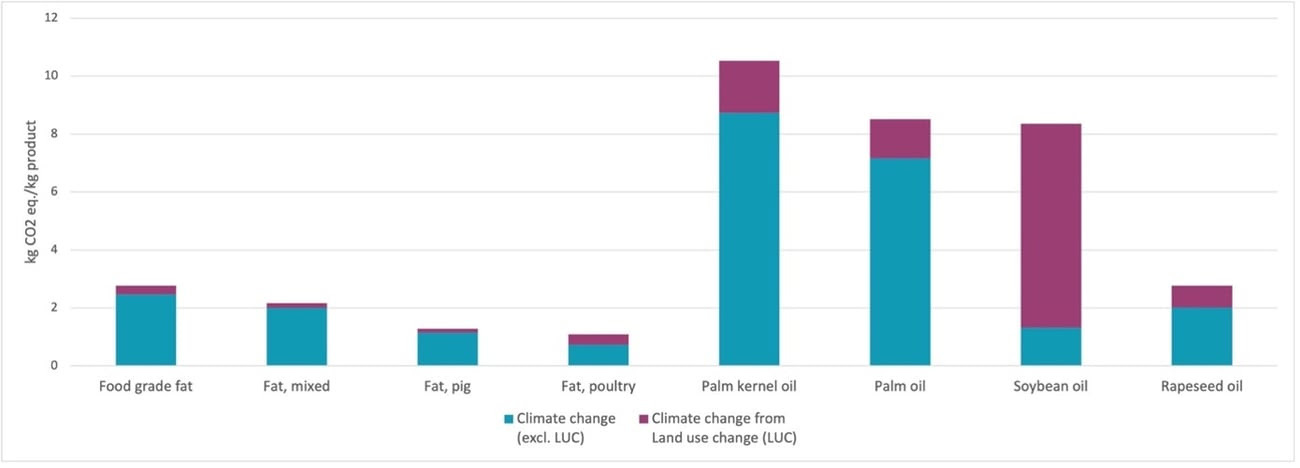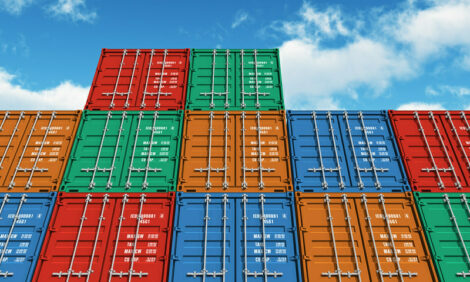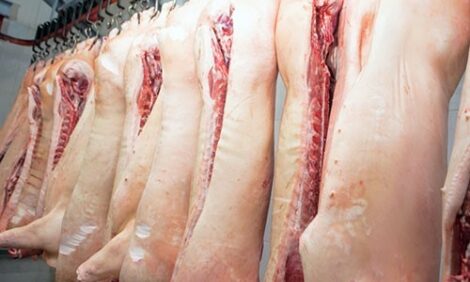



Animal by-products provide opportunity to cut carbon footprint of feed - study
More interest in PAPs in feed following lifting of EU banLifecycle analysis has shown the carbon footprint benefits of using animal by-products (ABP) in feed. For European feed compounders, locally produced Processed Animal Proteins (PAPs) and rendered fat can replace soymeal and palm oil with a net reduction in carbon emissions, according to a press release from the European Fat Renderers and Processors Association (EFPRA).
Conducted by Blonk consultants on behalf of EFPRA, the results meet Global Feed LCA Institute (GFLI) standards so ABPs can be directly compared with other feed ingredients on its database.
"Following the partial lifting of the ‘feed ban’ in the EU in autumn 2021, there is more interest in ABPs as feed ingredients," says EFPRA Technical Director Dr Martin Alm. "Porcine PAPs are permitted in poultry feed, likewise poultry PAPs can be used in pig feed."
There are also markets for PAPs in aquafeed and petfood, and Category 3 rendered fat is an important feed ingredient too. New EU regulations on use of products linked to deforestation further burnishes the credentials of ABPs.
The results
14 European rendering companies shared their environmental data from 2016-2018 to make the calculation, see Figure 1 for details of what is included in the calculation. There are results for four types of fat and seven types of protein meal which reflects the main ABPs available for feed production.
Soybean, palm and rapeseed, the vegetable-based alternatives to animal-based proteins and fats, have a higher overall carbon footprint than the ABP derived products. See Figures 2 and 3 which show the climate change impact per kg for ABP derived products and vegetable alternatives including land use change.
Palm and soy cultivation are highly associated with deforestation activities in Southeast Asia and South America over the last 20 years which is reflected by the relatively high contribution of land use change to climate change impact.
Assessing the impact per kg of protein is even more favourable to ABP’s because they are richer in protein than the vegetable alternatives. Rapeseed and soyabean meal contain 34% and 46% protein respectively whereas PAPs protein content ranges from 50–64%, other protein sources such as feather meal and blood meal are even higher. Hence, overall PAPs have a lower carbon footprint than rapeseed meal.
Looking at fats, apart from rapeseed oil, all animal fats have a lower environmental footprint than their vegetable oil alternatives. In Europe, animal fats are the primary natural source of hard fats and their vegetable-based alternatives, palm oil or palm kernel oil have an environmental impact between 4 to 8 times higher. In the same way, poultry oil can be compared with oil from soy and rape which have an impact between 2.4 – 7.5 times higher.
"Overall, the study shows that animal proteins and fats can play a significant role in reducing the environmental impact of feed and pet food. We want to make sure the feed sector is fully aware of this after the reintroduction of pig and poultry PAPs," says Dr Alm.
